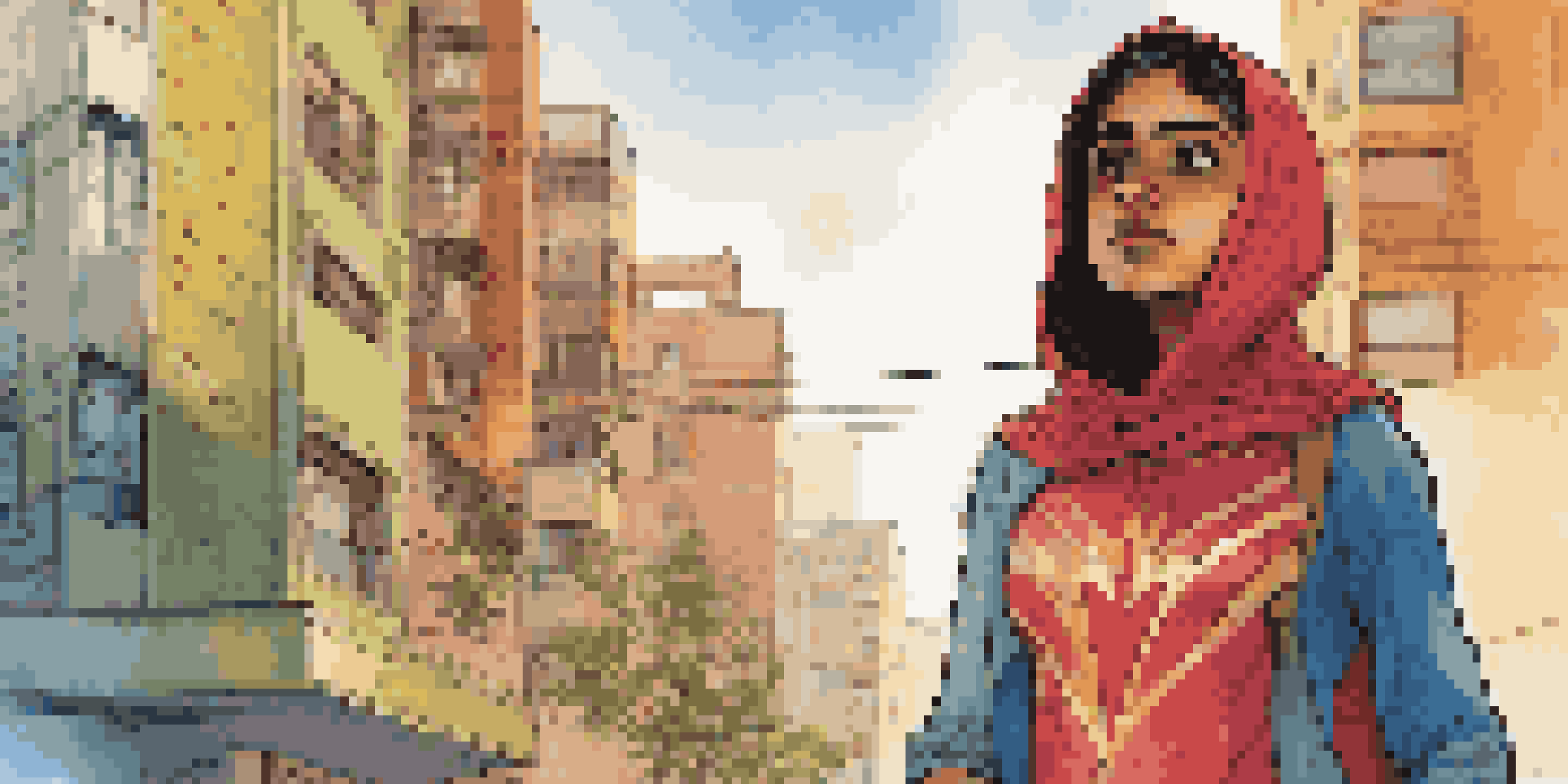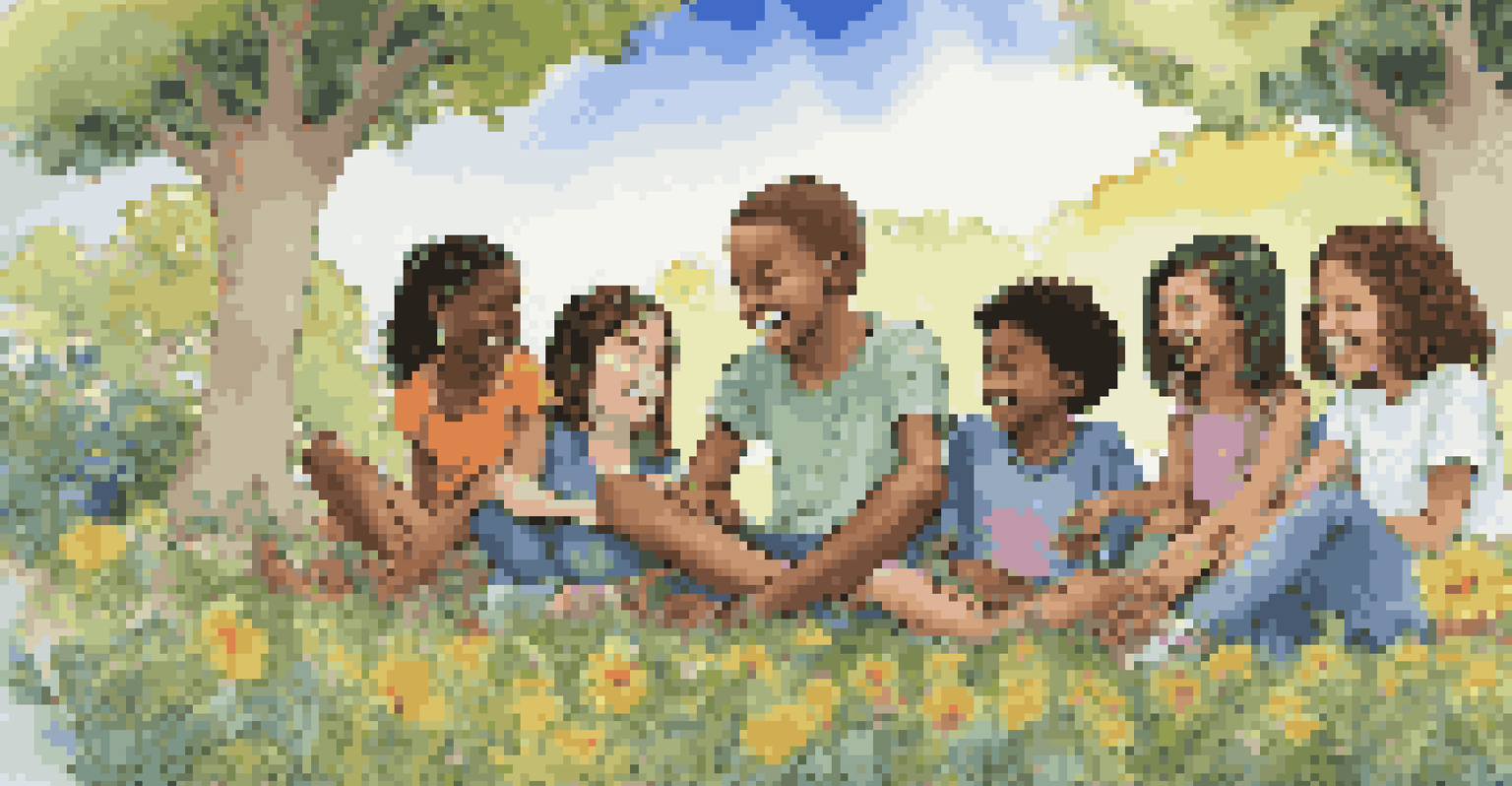The Role of Graphic Novels in Representing Diverse Voices

Understanding Graphic Novels and Their Appeal
Graphic novels combine visuals and text, creating a unique storytelling experience that resonates with readers of all ages. Unlike traditional novels, they engage readers through vivid illustrations, making complex narratives more accessible. This hybrid format can attract those who might feel intimidated by dense text, inviting a broader audience to explore diverse stories.
Graphic novels are a unique way to tell stories that can resonate with readers of all ages, combining the visual power of images with the depth of written narratives.
The appeal of graphic novels lies not just in their art but also in their ability to tackle intricate themes through relatable characters. Readers often find themselves drawn into the lives of protagonists who mirror their own experiences or challenge their perspectives. This connection fosters empathy and understanding, making graphic novels a powerful medium for representation.
As the popularity of graphic novels continues to rise, they are becoming an essential part of modern literature. They serve not only as entertainment but as vehicles for important social commentary, allowing marginalized voices to share their narratives in engaging ways. This evolving landscape is significant in promoting diverse representation across various cultures.
Diverse Voices: A Necessity in Storytelling
Diverse voices in storytelling are crucial as they enrich our understanding of different cultures and experiences. When readers encounter characters from backgrounds different from their own, it broadens their worldview and fosters a sense of connection. Graphic novels, with their visual elements, bring these diverse narratives to life in a way that can be deeply impactful.

The absence of diverse voices can lead to stereotypes and a lack of understanding about various communities. Graphic novels offer a platform for authors and artists from underrepresented groups to share authentic stories, breaking down barriers and dispelling myths. This representation is vital not only for the communities depicted but for readers who need to see a fuller picture of society.
Graphic Novels Enhance Accessibility
By combining visuals and text, graphic novels create an engaging storytelling experience that invites a wider audience, including those who may struggle with traditional literature.
Moreover, when readers see themselves reflected in graphic novels, it validates their experiences and encourages them to embrace their identity. This representation is empowering, especially for young readers navigating their own cultural and personal journeys. By showcasing diverse voices, graphic novels can inspire future generations to tell their stories.
Notable Graphic Novels Featuring Diverse Narratives
Several graphic novels have made waves by centering diverse voices and experiences. For instance, 'American Born Chinese' by Gene Luen Yang weaves together Chinese folklore and the immigrant experience, creating a rich narrative that resonates with many. This novel not only entertains but also educates readers about cultural identity and acceptance.
Stories are the most powerful way to share experiences and foster empathy, especially when they represent diverse voices that challenge our perspectives.
Another remarkable example is 'Ms. Marvel,' which follows Kamala Khan, a Pakistani-American teenager, as she navigates her dual identity while becoming a superhero. This series has been praised for its authentic representation of Muslim culture and the challenges faced by young immigrants. Such stories help readers relate to challenges that may differ from their own, promoting empathy and understanding.
These graphic novels exemplify how storytelling can bridge cultural divides. By presenting diverse characters and situations, they encourage readers to engage with perspectives they might not encounter in their everyday lives. This exploration of different narratives is essential for fostering a more inclusive society.
The Creative Process Behind Diverse Graphic Novels
Creating graphic novels that authentically represent diverse voices involves collaboration between writers, artists, and communities. This collaborative process ensures that the stories told are true to the experiences of those represented. Engaging with community members can provide insights that enrich the narrative and visual representation.
It's crucial for creators to approach these stories with sensitivity and respect, avoiding cultural appropriation. This means listening to the voices of those within the community and incorporating their perspectives into the storytelling process. When done right, this can lead to powerful narratives that resonate with a wide audience.
Diversity Enriches Storytelling
Incorporating diverse voices in graphic novels broadens readers' perspectives and fosters empathy, ultimately leading to a more inclusive understanding of society.
Moreover, the creative process also involves challenging existing stereotypes and narratives. By reimagining characters and plotlines, creators can shift the focus from traditional tropes to more authentic representations. This not only enriches the graphic novel landscape but also empowers underrepresented voices in the literary world.
The Role of Publishers in Promoting Diversity
Publishers play a significant role in the representation of diverse voices in graphic novels. By prioritizing diverse authors and stories, they can help shift the industry towards inclusivity. This means not only accepting but actively seeking out submissions from marginalized voices, ensuring that a variety of narratives are available to readers.
Additionally, publishers can provide resources and support for creators from underrepresented backgrounds, helping them navigate the industry. This support can include mentorship programs, workshops, and funding opportunities that empower these voices to share their stories. When publishers invest in diversity, they contribute to a richer literary landscape.
Furthermore, marketing diverse graphic novels is essential for reaching a broad audience. Publishers can help raise awareness of these works through targeted campaigns that highlight their importance. By elevating diverse voices, the publishing industry can foster a more inclusive reading culture that celebrates a multitude of experiences.
Impact on Readers and Cultural Conversations
The representation of diverse voices in graphic novels can significantly impact readers by encouraging self-reflection and dialogue. When individuals see their experiences validated in a story, it can lead to increased self-acceptance and pride in their identity. This validation is especially important for young readers who are forming their understanding of self and society.
Moreover, diverse graphic novels can spark conversations about cultural differences and shared experiences, fostering empathy among readers. These discussions can take place in classrooms, book clubs, or casual settings, allowing individuals to explore themes of identity, belonging, and resilience together. Such conversations are vital for building understanding in an increasingly diverse world.
Future Looks Bright for Diverse Voices
The growing demand for diverse narratives in graphic novels, along with new publishing avenues, is paving the way for innovative stories that reflect a wider range of human experiences.
Ultimately, the impact of diverse graphic novels extends beyond the page; they can inspire social change and awareness. By presenting stories that challenge the status quo, these works encourage readers to question societal norms and advocate for inclusivity. As readers engage with these narratives, they become more informed citizens, ready to contribute to a more equitable society.
The Future of Diversity in Graphic Novels
The future of diversity in graphic novels looks promising, with an increasing number of creators from diverse backgrounds entering the industry. As awareness of representation grows, more readers are seeking out stories that reflect their experiences and those of others. This demand is pushing publishers to expand their catalogs to include diverse voices, leading to a richer variety of narratives.
Additionally, digital platforms and self-publishing options have made it easier for creators to share their stories without the traditional gatekeeping of the publishing industry. This democratization of storytelling allows for a wider array of voices and experiences to emerge, paving the way for innovative narratives that challenge norms.

As graphic novels continue to evolve, the emphasis on diverse voices will likely shape the medium's future. These stories not only reflect the complexities of our world but also inspire readers to engage with the richness of human experience. In doing so, graphic novels can transform the landscape of literature, making it more inclusive and representative for all.